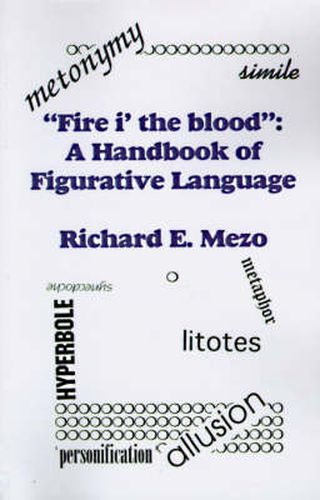Readings Newsletter
Become a Readings Member to make your shopping experience even easier.
Sign in or sign up for free!
You’re not far away from qualifying for FREE standard shipping within Australia
You’ve qualified for FREE standard shipping within Australia
The cart is loading…






This title is printed to order. This book may have been self-published. If so, we cannot guarantee the quality of the content. In the main most books will have gone through the editing process however some may not. We therefore suggest that you be aware of this before ordering this book. If in doubt check either the author or publisher’s details as we are unable to accept any returns unless they are faulty. Please contact us if you have any questions.
There are great differences between the oral use of figurative language and its written use. Nevertheless, the only separately published textbook for figurative language is almost entirely concerned with oral figurative language, offering such examples as you have a heart of stone or you make my blood boil. Much, if not most, oral language consists of long, repetitious portions of cliche and platitude, and not surprisingly, the figurative language used follows the same pattern. Writing teachers generally ask their students not to use cliches and platitudes, even though they may (mistakenly, I think) advise students to write like you speak.
Understanding figurative language should be considered only one part of a larger attempt to teach reading (understanding written works); however, figures of speech are quite common in most writing that asks to be taken seriously and that is something more than a compilation of facts. All writing requires the willing and active participation of the reader, but it is only in writing containing figures of speech that the literal and the non-literal are brought together. As part of a literacy program, the teaching of the common figures of speech presented here should probably begin before middle school and continue through high school, with most emphasis reserved for senior high school. A basic knowledge of figures of speech is required by most teachers of English in college.
This book contains examples of seven common figures of speech. These are all part of figurative language, which is different from literal language and must be read somewhat differently. After studying this book the student should be able to accurately identify each of the seven figures of speech and also be able to explain why it works well as that particular figure.
$9.00 standard shipping within Australia
FREE standard shipping within Australia for orders over $100.00
Express & International shipping calculated at checkout
This title is printed to order. This book may have been self-published. If so, we cannot guarantee the quality of the content. In the main most books will have gone through the editing process however some may not. We therefore suggest that you be aware of this before ordering this book. If in doubt check either the author or publisher’s details as we are unable to accept any returns unless they are faulty. Please contact us if you have any questions.
There are great differences between the oral use of figurative language and its written use. Nevertheless, the only separately published textbook for figurative language is almost entirely concerned with oral figurative language, offering such examples as you have a heart of stone or you make my blood boil. Much, if not most, oral language consists of long, repetitious portions of cliche and platitude, and not surprisingly, the figurative language used follows the same pattern. Writing teachers generally ask their students not to use cliches and platitudes, even though they may (mistakenly, I think) advise students to write like you speak.
Understanding figurative language should be considered only one part of a larger attempt to teach reading (understanding written works); however, figures of speech are quite common in most writing that asks to be taken seriously and that is something more than a compilation of facts. All writing requires the willing and active participation of the reader, but it is only in writing containing figures of speech that the literal and the non-literal are brought together. As part of a literacy program, the teaching of the common figures of speech presented here should probably begin before middle school and continue through high school, with most emphasis reserved for senior high school. A basic knowledge of figures of speech is required by most teachers of English in college.
This book contains examples of seven common figures of speech. These are all part of figurative language, which is different from literal language and must be read somewhat differently. After studying this book the student should be able to accurately identify each of the seven figures of speech and also be able to explain why it works well as that particular figure.